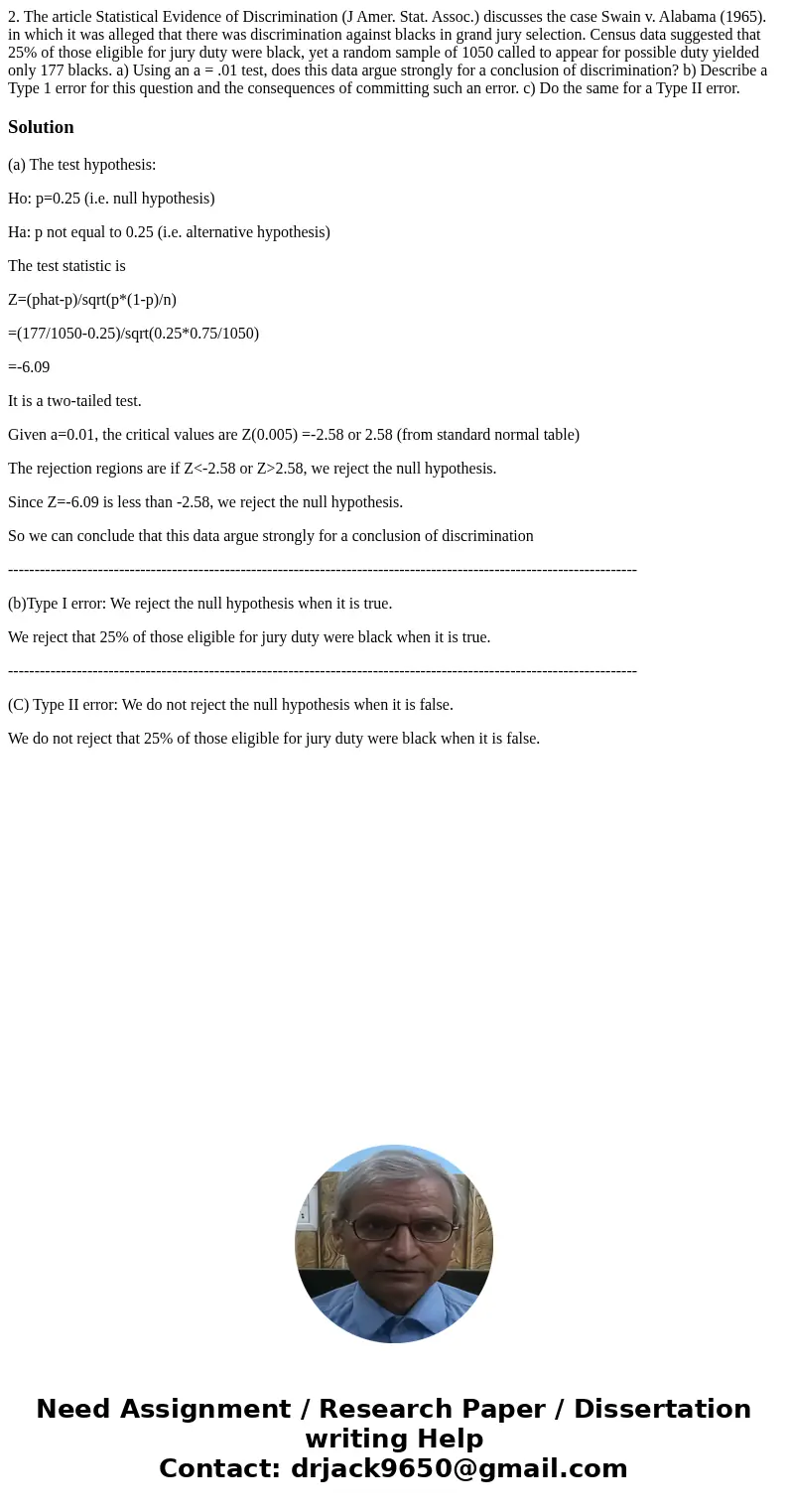2 The article Statistical Evidence of Discrimination J Amer
Solution
(a) The test hypothesis:
Ho: p=0.25 (i.e. null hypothesis)
Ha: p not equal to 0.25 (i.e. alternative hypothesis)
The test statistic is
Z=(phat-p)/sqrt(p*(1-p)/n)
=(177/1050-0.25)/sqrt(0.25*0.75/1050)
=-6.09
It is a two-tailed test.
Given a=0.01, the critical values are Z(0.005) =-2.58 or 2.58 (from standard normal table)
The rejection regions are if Z<-2.58 or Z>2.58, we reject the null hypothesis.
Since Z=-6.09 is less than -2.58, we reject the null hypothesis.
So we can conclude that this data argue strongly for a conclusion of discrimination
-----------------------------------------------------------------------------------------------------------------------
(b)Type I error: We reject the null hypothesis when it is true.
We reject that 25% of those eligible for jury duty were black when it is true.
-----------------------------------------------------------------------------------------------------------------------
(C) Type II error: We do not reject the null hypothesis when it is false.
We do not reject that 25% of those eligible for jury duty were black when it is false.

 Homework Sourse
Homework Sourse